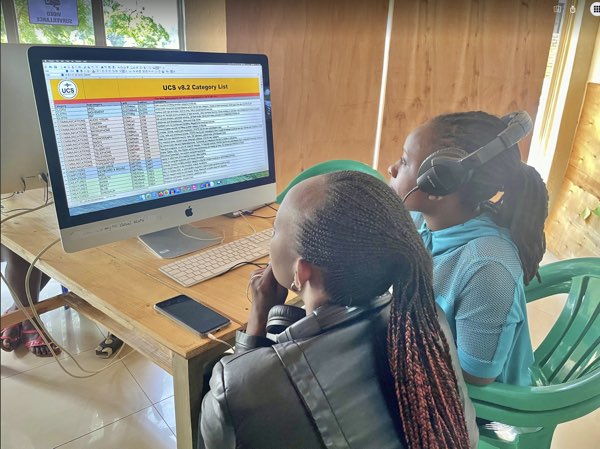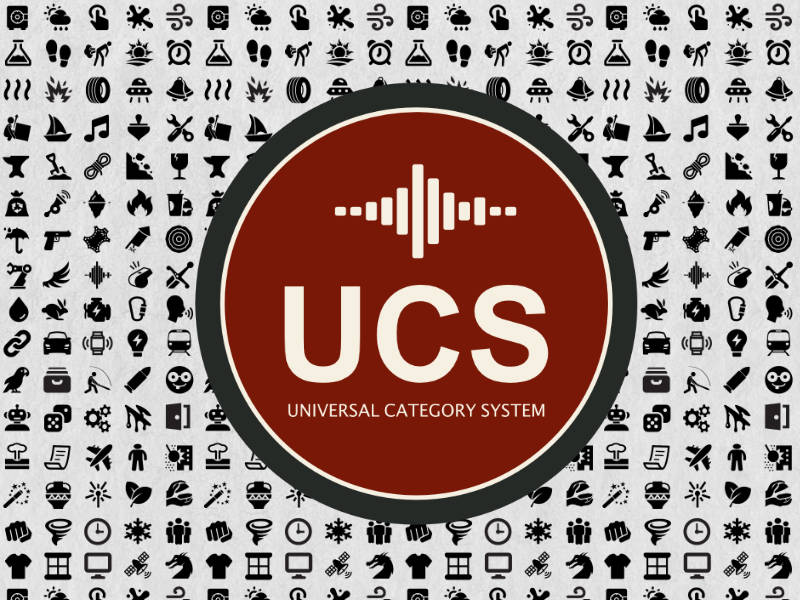It has been about three years since the COVID-19 pandemic sent us all scurrying into our homes, locking ourselves away, and finding projects to occupy our time. For me, that was UCS. Three years on, I wanted to write a bit about the project and its history.
I have worked most of my career at Skywalker Sound. We have always had a category system in place, similar in many ways to UCS, but about half the size (around 350 category pairs as opposed to UCS’s 753). I had always just taken it for granted.
Around eight years ago, I was teaching a 3-Day Masterclass in Hamburg, Germany. Among the questions that arose was that of how to organize a library. Many students didn’t know how to tackle such a project. Faced with starting their own libraries, they wondered how to classify and organize their recordings. I had worked at Skywalker for many years, a company with a well-structured category list. I had taken it for granted. But I realized there wasn’t something easily accessible like that for the general sound community. UCS was born out of that class.
The idea behind UCS was incredibly simple: wouldn’t it be nice to all agree on the categories we want to use to organize sound? Anyone who uses categories knows the pain of buying sounds. Every manufacturer had their system, or likely often no system, to categorize the sounds. Often, large vendors weren’t even consistent with their own products. Some vendors would release cars under categories like CARS, AUTOS, and VEHICLES, without even being able to pick one. Were they AMBIENCES, or ATMOS, or BGs? Was a prop plane a PLANE, an AIRCRAFT, or perhaps an AEROPLANE. UCS meant really only to offer a standardized list of what to call things.
Returning home, I built a category system to share with those students. Taking inspiration from the Skywalker list, I searched for any other such existing lists and took them into account. There wasn’t much. A few sound effects companies had released very rudimentary lists (mostly just ones useful to their products), and someone had made a SMPTE sound effects category list. But it, too, I felt, was lacking. So, I built what would later become known as UCS (the original list had no name).
Justin Drury, from Soundminer, showed some interest, and eventually, it was hosted on their website and built into the program but not advertised much. A small blurb on their website announced it, and that was about it. I didn’t think about it again until Covid. At that point, I started looking for something to do, as I don’t sit idly very well. After some investigation, I was surprised how many had adopted that system and were using it.
So, with that inspiration and seemingly endless time, I decided to revisit it. This time, it needed a name, and as I’m a sound designer, not an advertising and branding expert, I ended up with Universal Category System.

The UCS Overview Poster
This time, I enlisted the help of others. I convened a small Brain Trust of around a dozen people, primarily sound designers and editors, and a couple of people who have done work as librarians. We met for 3 or 4 Saturdays online. We discussed at length how to make something complicated enough to cover MOST sounds but not so complicated as to scare people off completely. We argued, and we made compromises. We struggled with many topics. How many categories should there be? 300 was too small, but we saw some specific company internal lists approaching 3,000. That was too many. And then, of course, the biggest question of all. How to divide up the world of sound into small compartmentalized blocks. So many blocks.
We found ourselves at odds over many things. Certain groups of sounds are simply hard to categorize and subcategorize. Ambiances, for example, begged the question: What divisions of something as simple as ‘public places’ could exist? Churches, stores, museums, bars, schools, etc. Which would get their own category, and which would we lump into a more general ‘public places’ subcategory?
Animals are particularly hard. Should we opt for some scientific classification? Several of us wanted to take the list in that direction. But in the end, we opted for something in between. A semi-scientific class-action of animals that may offend a zoologist but would appease a sound artist.
As important as the list itself, though, was the question: What do we DO with this information? Enter Justin Drury again, who immediately started thinking up clever ways to utilize something like this within Soundminer. And Kai Paquin, who immediately started creating an elaborate Keyboard Maestro macro to use in ProTools. Other tools followed, and quite a few UCS tools and helpers are now available for programs like Soundminer, ProTools, and Reaper.

The UCS Tagger /Search Window inside Soundminer
As I started to share the project wider, it was met with mixed reactions. Some people understood the idea immediately and were happy for any attempt to standardize something that was quite a mess in our industry. Some people misunderstood the point entirely. Many people seemed content enough with NO standardization. They were OK living in the Metadata-Wild-West. They saw something like UCS as ‘work’, and they didn’t want to do it. Many still don’t. And that’s OK.
But over the last three years, the system has seen substantial growth as we have released two updates to the list (the last one, v8.2, the final version). All major sound asset programs now support at least some part of it. Most of the biggest and most important vendors have or are in the process of adopting it, many going back through their substantial back catalogs to redo their metadata.
And this is, of course, more than I could have hoped for. All I DID hope for was that maybe we could craft something useful for our industry, particularly for people starting NOW, to give them some framework to build off. For every naysayer I still encounter, I get a dozen nice messages thanking us for tackling this project. Recently, I received this picture from a friend on Facebook, Ana Monte. She had gone to Rwanda to teach a group of women the art of field recording (you can read more about the amazing project here: https://zoomcorp.com/en/de/news/zoom-x-the-rwanda-media-project/), and she introduced them to UCS. I’m honored to be a tiny part of such a wonderful project.

UCS in Rwanda
This project has consumed a considerable part of the last three years. I won’t necessarily call it a labor of LOVE because it was often frustrating, thankless, and financially irresponsible. Yet a picture or two like those sent to me substantially lessen the pain. UCS seems to be becoming somewhat of a ‘standard’ system now. I see it used daily. Its widespread adoption, while the consternation of some, seems to have been met mostly with appreciaton. I suppose it will be part of my legacy now, what little of that there will be, and that brings me some mild contentment. I hope long after I’m gone, this little Pandemic-Project will live on.
NOTE: As much as UCS might have been my initiative, the project was helped along the way and brought to fruition by many people, Justin Drury and Kai Paquin, the entire brain trust, and all of the people who donated their time to help in the foreign translations. The list of all involved is at the bottom of the main website for the system at www.universalcategorysystem.com.



0 Comments